The fog of war is the uncertainty in situational awareness experienced by participants in military operations. The term seeks to capture the uncertainty regarding one's own capability, adversary capability, and adversary intent during an engagement, operation, or campaign. Military forces try to reduce the fog of war through military intelligence and friendly force tracking systems.

The Ancient Art of War is a video game designed by Dave and Barry Murry, developed by Evryware, and published by Broderbund in 1984. It is recognized as one of the first real-time strategy or real-time tactics games.
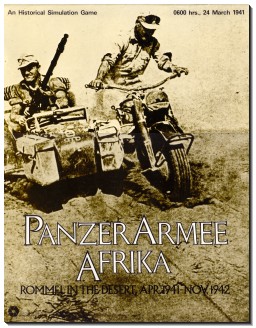
PanzerArmee Afrika, subtitled "Rommel in the Desert, April 1941 - November 1942", is a board wargame published by Simulations Publications, Inc. (SPI) in 1973 that simulates the World War II North African Campaign that pitted the Axis forces commanded by Erwin Rommel against Allied forces. The game was revised and republished in 1984 by Avalon Hill.

LHX Attack Chopper is a combat helicopter simulation game published by Electronic Arts in 1990. Development was led by Brent Iverson who later designed Chuck Yeager's Air Combat. The game was released for MS-DOS and ported to the Mega Drive/Genesis.

Eastern Front (1941) is a computer wargame for Atari 8-bit computers created by Chris Crawford and published through the Atari Program Exchange (APX) in 1981. A scenario editor and assembly language source code for the game were also sold by APX as separate products.

Afrika Korps is a board wargame published by Avalon Hill in 1964 and re-released in 1965 and 1978 that simulates the North Africa Campaign during World War II.

Under Fire! is a tactical level computer game released by Avalon Hill's computer division in 1985. The game was released for Apple II, Commodore 64, and DOS systems. Initial packaging had the name of the designer, Ralph H. Bosson, over the title on the box front so as to read Ralph Bosson's UNDER FIRE!, but subsequent packaging replaced his name and read Avalon Hill's UNDER FIRE! instead. The C64 port was by Dyadic Software Associates.
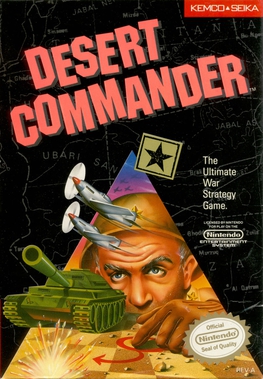
Desert Commander is a 1988 turn-based strategy video game developed and published by Kemco in Japan and North America for the Nintendo Entertainment System. It is themed after the North African theatre of World War II in the 1940s, where players take command of the Allied Forces led by George S. Patton and Bernard Montgomery to fight against the Axis Powers led by Erwin Rommel. Its gameplay consists of moving units into positions to confront enemies in turn-based encounters determined by multiple factors, replenishing units with resources in order to occupy the enemy headquarters or destroy all enemy forces. The title garnered positive reception from critics; Reviewers praised several aspects such as the presentation, visuals, controls, challenge and balance of strategy and action, though others criticized certain design choices while fan reception proved to be mixed in Japan.
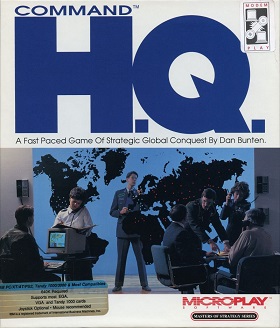
Command HQ is a real-time strategy world domination game. It was released in 1990 by Microplay Software and was created by designer Danielle Bunten.

NATO Commander is a strategy video game designed by Sid Meier for Atari 8-bit computers and published in 1983 by MicroProse. Ports to the Apple II, and Commodore 64 were released the following year.
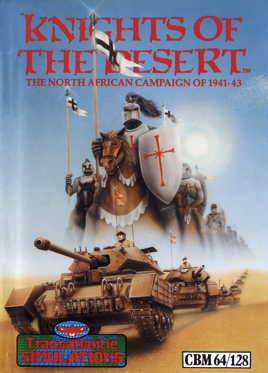
Knights of the Desert is a 1983 computer wargame developed by Tactical Design Group and published by Strategic Simulations for the Apple II, Atari 8-bit computers, Commodore 64, MS-DOS, and TRS-80. It is based on the 1940-43 North African campaign.

Legionnaire is a computer wargame for Atari 8-bit computers created by Chris Crawford released through Avalon Hill in 1982. Recreating Julius Caesar's campaigns in a semi-historical setting, the player takes command of the Roman legions in real-time battles against the barbarians.

Red Storm Rising is a simulation video game based on Tom Clancy's 1986 novel Red Storm Rising and released in 1988 by MicroProse. The player is put in charge of an American SSN submarine in the Norwegian Sea Theater with the overall role of a hunter killer performing various missions in the context of the global conflict described in the book representing a campaign. Its original Commodore 64 version was co-designed and co-programmed by the famous game designer Sid Meier.

Gary Grigsby's Pacific War is a 1992 strategy wargame released by Strategic Simulations, Inc. It covers World War II in the Pacific between the Japanese Empire and the Allies, which include the United States, the British Empire, the Netherlands, Australia, New Zealand, Canada, the Philippines, and China. The main map of the game stretches from north of the Aleutians to southern New Zealand and Australia, and from the eastern coast of India to the West Coast of North America. It includes aircraft carrier operations, amphibious assaults, surface bombardments/engagements, strategic bombing, kamikazes, and the submarine war against naval and merchant shipping.
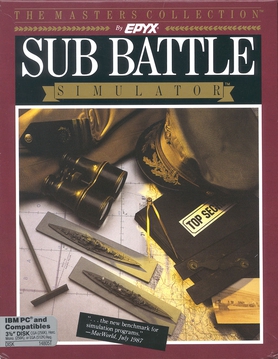
Sub Battle Simulator is a naval combat simulation game released by Epyx in 1987. The game was developed by Digital Illusions, Inc. It was released for the Amiga, Apple IIGS, Commodore 64, Atari ST, Macintosh, MS-DOS, and the Tandy Color Computer 3.
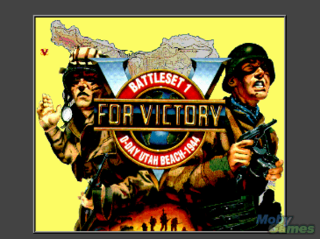
V for Victory: D-Day Utah Beach is a 1991 computer wargame developed by Atomic Games and published by Three-Sixty Pacific. It was widely lauded and repeatedly reviewed as the best wargame of its era. Its success led to three further games in the V for Victory series, and then the similar World at War series published by Avalon Hill.

Falklands '82 is a 1986 turn-based strategy video game developed and published by Personal Software Services for the ZX Spectrum and Commodore 64. It is the fifth instalment of the Strategic Wargames series. The game is set during the 1982 Falklands War and revolves around the Argentine occupation and subsequent British re-capture of the Falkland Islands. The player controls the British Task Force as they must either defeat all Argentine forces on the archipelago or re-capture every settlement.
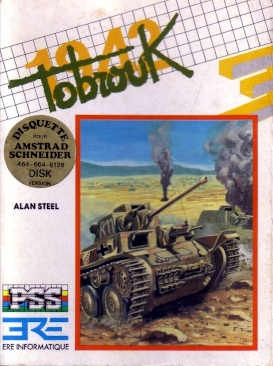
Tobruk: The Clash of Armour is a turn-based strategy video game developed and published by Personal Software Services. It was exclusively released in the United Kingdom for the Commodore 64, ZX Spectrum and Amstrad CPC in 1987. It is the eleventh instalment of the Wargamers series. The game is set during the 1941 Siege of Tobruk of the Western Desert Campaign in World War II and revolves around the Allied forces attempts to overthrow German field marshal Erwin Rommel from the city.

Kasserine Pass, in some editions subtitled "The Baptism of Fire", is a board wargame published by Conflict Games in 1972 that simulates the Battle of Kasserine Pass during the North African Campaign of 1942, when inexperienced American forces were attacked by the battle-hardened Afrika Korps under the command of Erwin Rommel. The game was the first created by noted game designer John Hill.

Invasion: Sicily – Alexander vs Kesselring is a board wargame published by Rand Game Associates in 1974 that simulates the Allied invasion of Sicily during World War II.



















